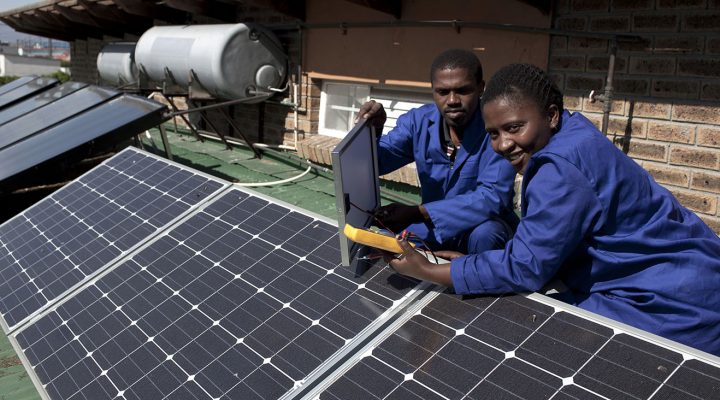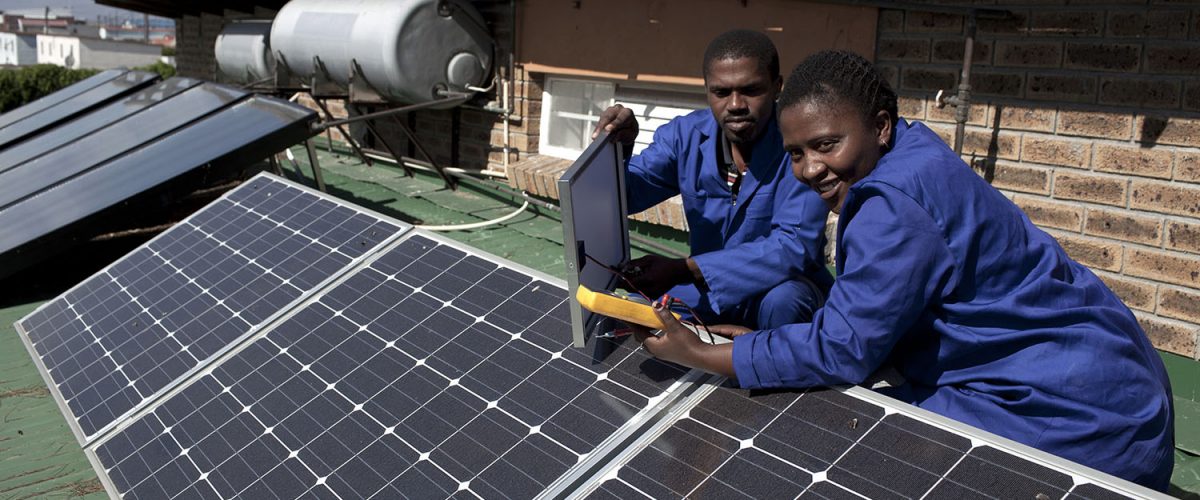South Africa is home to Africa’s largest drive for solar and renewable energy, allowing rural churches — which were forgotten in electrification of the last two decades — to finally light up on the cheap.
“It’s the first time to switch on electricity at my church in 20 years,” said Pastor Tom Boilo of the Nazarene Baptist Church in Cata, a rural village in the Eastern Cape, South Africa’s poorest province.
Because of a century of apartheid colonialism, millions of Black South Africans lived in rural districts that were disconnected from the coal-power electricity grid, piped water, functional schools and paved roads, explained Pastor Ronald Waza of the Zion Christian Church. According to the Social Sciences Research Network, only 20% of Black South Africans had access to electricity before 1994, despite making up the majority of the population.
Only 20% of Black South Africans had access to electricity before 1994.
“This was a deliberate design of the colonial government, to drive rural Black South Africans from electricity as much as possible,” Pastor Waza said.
After the end of apartheid colonialism in South Africa in 1994, when Nelson Mandela became the first Black president, a massive electrification program got under way, connecting millions of Black households on coal-fired electricity. More than 7.4 million households were connected to the grid between 1994 and 2018, according to the Energy Ministry.
Yet an anomaly remained. While cities were largely electrified, a significant number of rural districts remained in the dark — along with their churches.
“It was too expensive to construct electricity grids for 1000 km to connect just 30 rural churches, we were told,” explained Pastor Boilo.
“We were told endless excuses until the last five years when rolling daily electricity blackouts became a feature of citizens’ life in South Africa. We knew if there is no reliable electricity in city homes, churches in rural districts are now totally forgotten. We had to take matters in our own hands.”
A chance for rural churches to be connected to electricity came because of the global drive to decarbonize electricity. In the last five years, there has been a drive to switch South Africa to renewable energy because, according to climate researcher Tapuwa Nhachi, South Africa is a heavy coal miner and exporter, and its coal power stations are the world’s 12th largest emitter of greenhouse gases. In addition, the U.S. and EU have promised billions of dollars in favorable aid to persuade South Africa to decommission her coal power stations.
As a result, a green transition reluctantly got under way in South Africa. The renewable energy drive that’s now gripping South Africa is causing companies and households to build their own private solar plants mounted on roofs and in fields and move away from the state’s coal-powered electricity. A massive 6,326 megawatts of solar energy already has been installed across South Africa. Coupled with a flood of cheap solar inverters, panels and PV battery imports from China, numerous rural churches are now getting switched on to electricity.
“We are the churches forgotten by coal-fired electricity of the last 100 years but now light up thanks to cheap solar gear from China.”
“We are the churches forgotten by coal-fired electricity of the last 100 years but now light up thanks to cheap solar gear from China,” said Derek Shashi, a retired Presbyterian cleric in Shongweni in rural east South Africa. “It’s easy. Our church members and a few well-wishers come together to install solar gadgetry — and the equipment is cheap — and the tariffs are cheap unlike hydroelectricity.”
China’s solar exporters are the biggest winners when it comes to solar gear being exported to various southern Africa countries due to price and ease of installation. The avalanche of Chinese-made solar power gear in South Africa is of particular help to the rural churches.
Solar power offers rural churches multiple benefits for themselves and their communities, ranging from reduced night burglaries and the ability to attract more rural worshippers who take advantage of solar energy power points at church premises to recharge their gadgets.
“It’s a revolution,” said Sakile Xoma, a deacon at the Apostolic Faith Mission in Cata, Eastern Cape province. “Local mothers can now connect their rechargeable bottles to power points and heat milk for babies or purify drinking water. The joy is uncontainable.”
Beneath the joy of solar power, there is worry about the waste to come. Technician Brian Lazi worries that unrecycled solar batteries, panels and inverters could clog rural water streams or fields.
“Yes there is a flood of cheap solar gear being mounted on top of roofs of rural churches, but the obsolete solar panels are ending up in landfills and that’s bad,” Lazi said.


